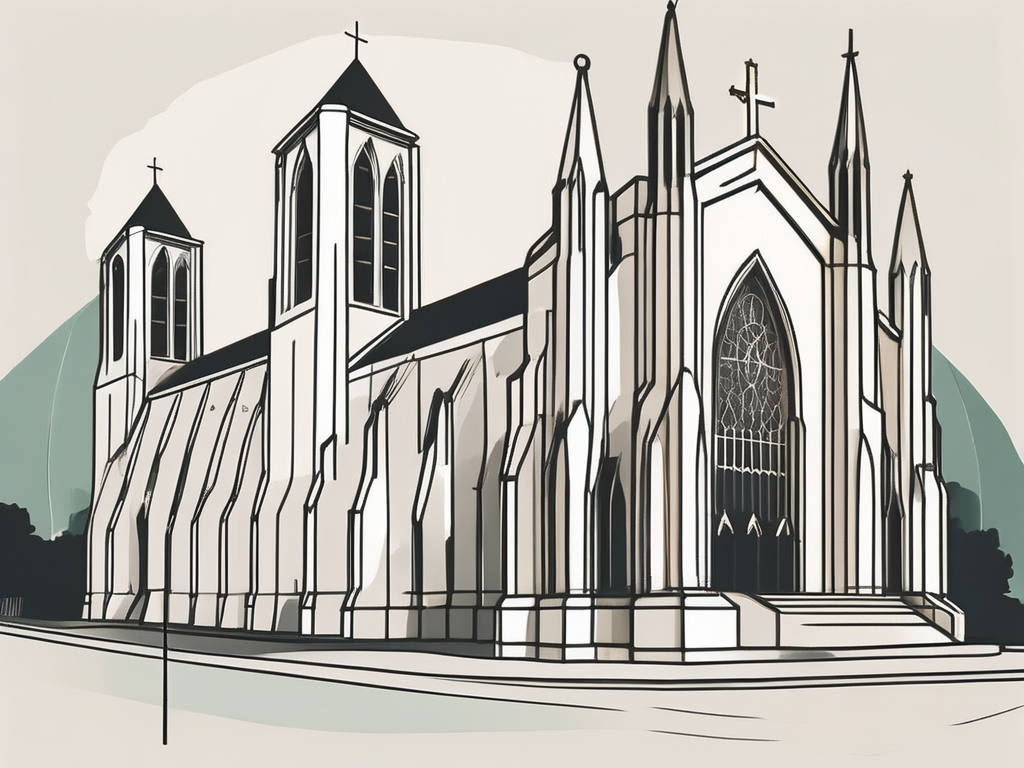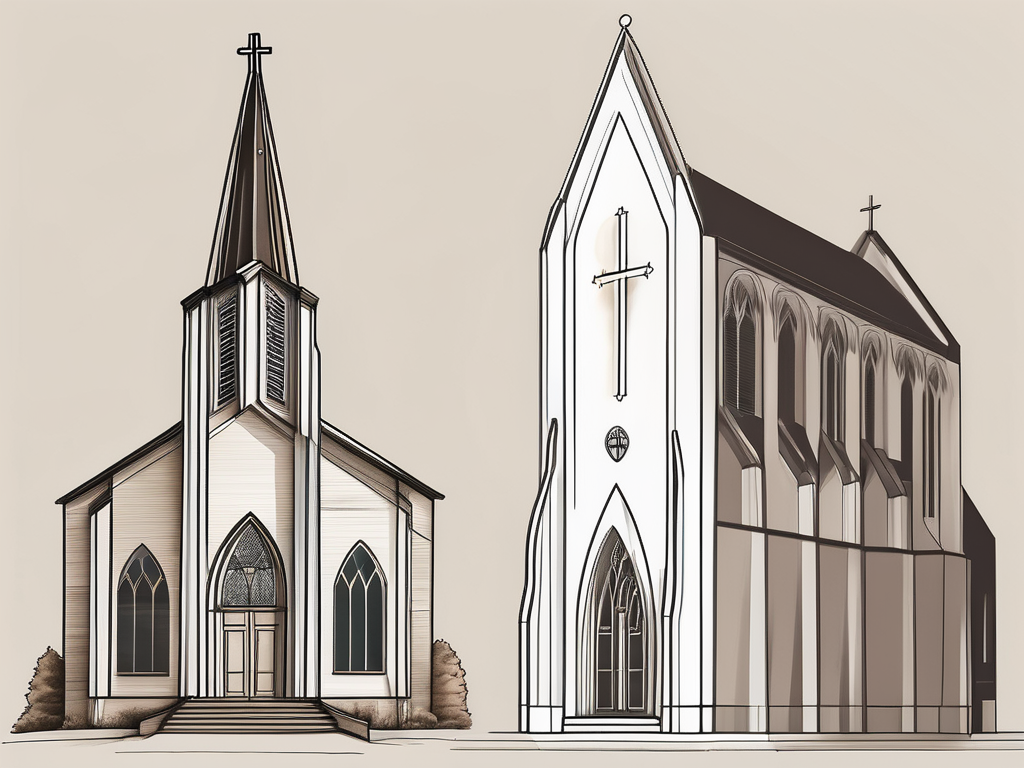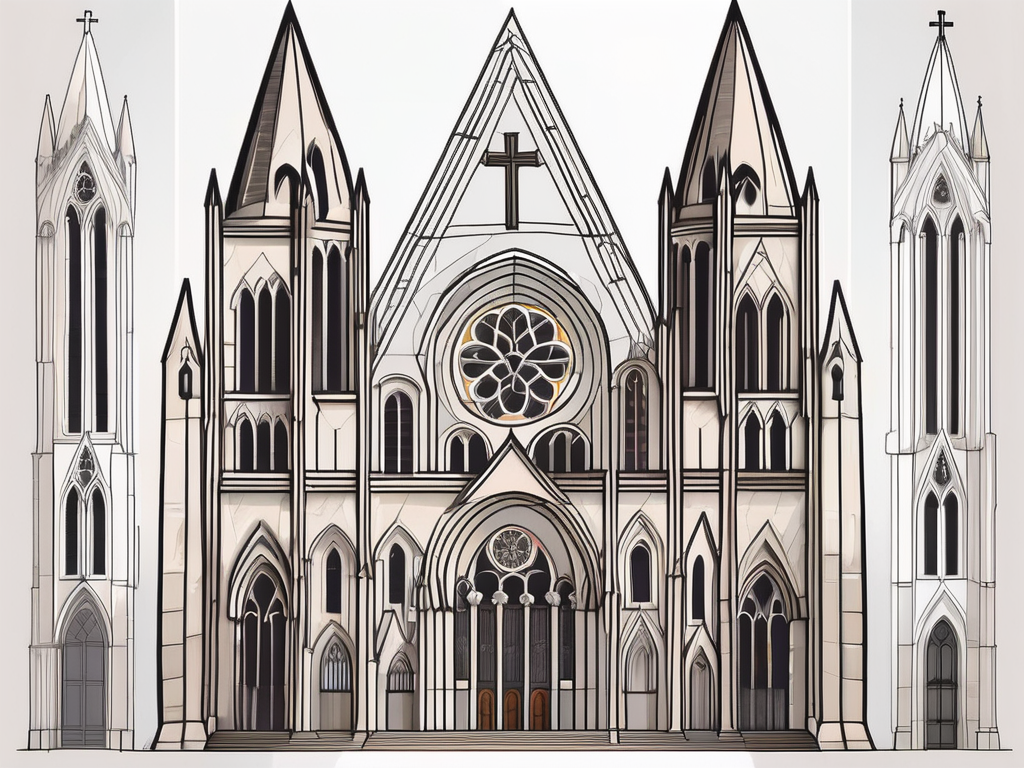In this article, we will delve into the similarities and differences between two important Christian denominations: Anglicanism and Baptist. By understanding the basics, theological beliefs and practices, worship styles and liturgy, role and structure of the church, as well as sacraments and ordinances, we can gain insight into the unique aspects of each tradition. Let’s embark on this comparative journey together!
Understanding the Basics: Anglicanism and Baptist
Origins and Historical Background of Anglicanism
Anglicanism traces its roots back to the English Reformation, which took place in the 16th century. With King Henry VIII breaking away from the authority of the Roman Catholic Church, a new religious movement began to take shape. The establishment of the Church of England, with its blend of Catholic and Protestant elements, gave birth to Anglicanism.
During the English Reformation, the political and religious landscape of England underwent significant changes. Henry VIII’s desire for a male heir led him to seek an annulment from his first wife, Catherine of Aragon, which the Pope denied. Frustrated by this, Henry VIII declared himself the Supreme Head of the Church of England, effectively separating from Rome and establishing the Church of England as a separate entity.
Under the reign of Henry VIII’s daughter, Queen Elizabeth I, Anglicanism solidified its position as the official religion of England. Elizabeth I sought to find a middle ground between Catholicism and Protestantism, allowing for a diverse range of beliefs within the Church of England. This approach, known as the Elizabethan Settlement, helped Anglicanism gain popularity and acceptance among the English population.
Over the centuries, Anglicanism evolved and spread to various parts of the world through colonization and missionary efforts. English settlers brought their religious beliefs with them to the American colonies, leading to the establishment of the Episcopal Church in the United States. Today, Anglicanism is the third-largest Christian denomination globally, characterized by its broad range of theological perspectives within its diverse congregations.
Origins and Historical Background of Baptism
Baptism, on the other hand, can be traced back to early Christianity. It is considered one of the oldest sacraments and has its origins in the baptism of Jesus by John the Baptist. The act of baptism symbolizes purification, rebirth, and initiation into the Christian faith.
During the Protestant Reformation in the 16th century, various religious groups emerged with different interpretations of Christianity. One of these groups, known as the Anabaptists, played a significant role in the development of the Baptist tradition. Anabaptists believed in adult baptism, rejecting the practice of infant baptism that was common in other Christian denominations.
The term “Baptist” originated from the belief in adult baptism and the immersion of believers in water. The Baptist movement gained momentum in the 17th century, with the establishment of the first Baptist churches in England and the American colonies. Prominent Baptist figures, such as John Bunyan and Roger Williams, played key roles in advocating for religious freedom and the separation of church and state.
Baptists prioritize the authority of Scripture and emphasize the freedom of individual conscience in matters of faith and practice. They believe in the autonomy of the local church, where decisions are made collectively by the congregation. Throughout history, Baptists have faced persecution and discrimination for their beliefs, but their commitment to religious liberty and the believer’s church has remained steadfast.
The historical journey of Baptists has seen them establish their presence in different parts of the world. Today, various Baptist associations and conventions exist, each with its own distinct traditions and practices. From the Southern Baptist Convention in the United States to the Baptist Union of Great Britain, Baptists continue to have a significant impact on the global Christian community.
Theological Beliefs and Practices
When it comes to theological beliefs and practices, different religious denominations have their own unique perspectives. In this discussion, we will explore the core beliefs of Anglicans and Baptists, two prominent Christian denominations.
Core Beliefs of Anglicans
Anglicans, also known as Episcopalians in some regions, hold a set of core beliefs that shape their faith and guide their practices. At the heart of Anglican theology is the belief in the Holy Trinity – God the Father, God the Son (Jesus Christ), and God the Holy Spirit. This belief aligns with the Nicene Creed, which serves as a statement of faith for Anglicans.
One of the remarkable aspects of Anglicanism is its ability to accommodate a broad theological spectrum. Within the Anglican communion, one can find individuals with conservative and progressive viewpoints. This inclusivity allows for a diverse range of interpretations and theological discussions within the Anglican community.
The sacraments of baptism and the Eucharist hold significant importance in Anglican worship and spirituality. Baptism is seen as a rite of initiation into the Christian faith, symbolizing the cleansing of sins and the incorporation into the body of Christ. The Eucharist, also known as Holy Communion or the Lord’s Supper, is a central act of worship in which Anglicans believe they partake in the body and blood of Christ.
In terms of salvation, Anglicans believe that individuals are saved through the grace of God. They view good works as a response to God’s grace, recognizing that they are not a means of earning salvation but rather a way to express gratitude and love towards God and others.
Core Beliefs of Baptists
Baptists, another significant Christian denomination, have their own distinct set of core beliefs and practices. Central to Baptist theology is the authority and sufficiency of the Bible in matters of faith and practice. Baptists believe that the Bible is the inspired word of God and serves as the ultimate guide for Christian living.
For Baptists, salvation is understood as a personal relationship with Jesus Christ. They emphasize the importance of individual conversion, where a person consciously accepts Jesus as their Lord and Savior. This personal faith in Christ is considered essential for salvation.
Unlike Anglicans, who have a more structured approach to liturgy and worship, Baptists tend to have a simpler and less formal style of worship. Congregational participation plays a vital role in Baptist services. This participation includes prayer, singing hymns and worship songs, and engaging in the preaching of God’s word.
Regarding the sacrament of baptism, Baptists practice adult baptism by immersion. This act symbolizes the believer’s identification with Christ’s death, burial, and resurrection. It is seen as a public declaration of one’s faith and a significant step in the believer’s spiritual journey.
As you can see, while both Anglicans and Baptists are part of the larger Christian tradition, they have distinct theological beliefs and practices that shape their worship and spirituality.
Worship Styles and Liturgy
Worship styles and liturgy vary among different Christian denominations, reflecting their unique traditions and beliefs. Two prominent examples of worship styles are Anglican worship and Baptist worship.
Anglican Worship: Structure and Elements
Anglican worship is known for its liturgical structure, which provides a sense of order and reverence. The Book of Common Prayer, containing set prayers and worship orders, is widely used in Anglican services. This book, with its rich language and historical significance, guides Anglicans in their worship.
The Eucharist, also known as Holy Communion, holds a central place in Anglican worship. It is a sacrament that signifies the unity of the body of Christ. During the Eucharist, Anglicans believe that the bread and wine become the body and blood of Jesus Christ.
Traditional Anglican liturgy incorporates hymns, readings from the Bible, and prayers led by clergy and congregants. The hymns, carefully chosen for their theological depth and musical beauty, enhance the worship experience and allow the congregation to express their faith through song.
In addition to the Eucharist, Anglican worship may include other sacraments, such as baptism, confirmation, marriage, ordination, and anointing of the sick. These sacraments hold deep significance for Anglicans, representing important milestones in their spiritual journey.
Baptist Worship: Structure and Elements
Baptist worship services often emphasize congregational participation and spontaneity. While some Baptist churches may follow a liturgical structure, many have a more flexible format that allows for a greater degree of freedom in worship.
Worship in Baptist churches typically includes singing hymns and contemporary songs, prayer, Bible readings, and expository preaching. The congregation actively participates in these elements, with individuals offering prayers and sharing testimonies as led by the Holy Spirit.
Baptists do not consider the Eucharist as a sacrament. Instead, they refer to it as an “ordinance,” signifying its symbolic nature rather than conferring grace or forgiveness. For Baptists, the Lord’s Supper serves as a memorial of Christ’s sacrifice and a time of reflection on the significance of His death and resurrection.
Baptist worship services often feature expository preaching, where the pastor carefully explains and applies the meaning of biblical texts. This type of preaching aims to deepen the congregation’s understanding of Scripture and encourage personal spiritual growth.
Overall, worship in Baptist churches seeks to foster a personal and intimate connection with God, allowing individuals to express their faith in a way that is meaningful to them.
Role and Structure of the Church
The role and structure of the church vary across different denominations and traditions. In this discussion, we will explore the hierarchical structure of the Anglican Church and the decentralized structure of Baptist churches.
Church Hierarchy in Anglicanism
Anglicanism, a tradition within Christianity, has a hierarchical structure that is characterized by the presence of bishops, priests, and deacons. At the apex of the Anglican Communion stands the Archbishop of Canterbury, who serves as the spiritual leader and symbol of unity for Anglicans worldwide.
Within the Anglican Church, each geographical region is divided into dioceses, and each diocese is led by a bishop. These bishops are responsible for overseeing the clergy and congregations within their jurisdiction. They provide spiritual guidance, ensure adherence to doctrine, and promote the overall well-being of the church.
Working alongside the bishops are the parish priests and deacons. Parish priests are responsible for the day-to-day pastoral care of the congregation. They lead worship services, deliver sermons, administer sacraments, and provide spiritual counseling. Deacons, on the other hand, focus on serving the community and assisting the clergy in their duties.
The hierarchical structure of Anglicanism ensures a clear chain of command and accountability within the church. It allows for effective leadership, coordination, and the preservation of tradition and doctrine.
Church Hierarchy in Baptism
In contrast to the hierarchical structure of Anglicanism, Baptist churches adopt a decentralized model with congregational autonomy. This means that each local Baptist church is self-governed and independent, without a central authority figure or hierarchy.
Decisions in Baptist churches are made collectively within the congregation, often through a democratic process. This promotes the involvement and participation of all members in matters of governance and ministry. Elected leaders, such as elders or deacons, play a crucial role in guiding the church’s affairs and ensuring that decisions align with the congregation’s beliefs and values.
The decentralized structure of Baptist churches reflects a strong emphasis on individual freedom, personal responsibility, and the priesthood of all believers. It allows for flexibility and adaptability to local contexts, as each congregation has the autonomy to shape its worship practices, mission outreach, and community engagement.
While Baptist churches lack a formal hierarchy, they often maintain connections and affiliations with other Baptist churches through voluntary associations and networks. These associations provide opportunities for cooperation, mutual support, and the sharing of resources and best practices.
Overall, the structure of the church plays a significant role in shaping its identity, governance, and mission. Whether hierarchical or decentralized, each structure has its unique strengths and challenges, reflecting the diverse expressions of Christian faith and practice.
Sacraments and Ordinances
Sacraments in Anglican Tradition
Anglicans recognize two sacraments: baptism and the Eucharist. Baptism, usually administered to infants or adults seeking initiation into the Church, symbolizes initiation into the Christian faith and community. The Eucharist, with its focus on the presence of Christ in the bread and wine, represents the ongoing participation in Christ’s sacrifice and the nourishment of believers’ souls.
Ordinances in Baptist Tradition
Baptists practice two ordinances: baptism and the Lord’s Supper. Baptism, as mentioned earlier, involves the immersion of believers as a public declaration of their faith and commitment to follow Christ. The Lord’s Supper, or communion, is observed regularly and symbolizes the remembrance of Christ’s sacrifice and the unity of believers within the body of Christ.
Conclusion
In conclusion, Anglicanism and Baptism have distinct historical, theological, and liturgical characteristics. While Anglicanism embraces a more structured approach to worship and includes elements of Catholic tradition, Baptists highlight individual faith, congregational autonomy, and a simpler worship style. Both denominations hold a rich heritage and contribute to the diverse tapestry of the Christian faith.
Understanding these differences helps foster dialogue, respect, and appreciation among Christians, ultimately strengthening the overall body of Christ.












